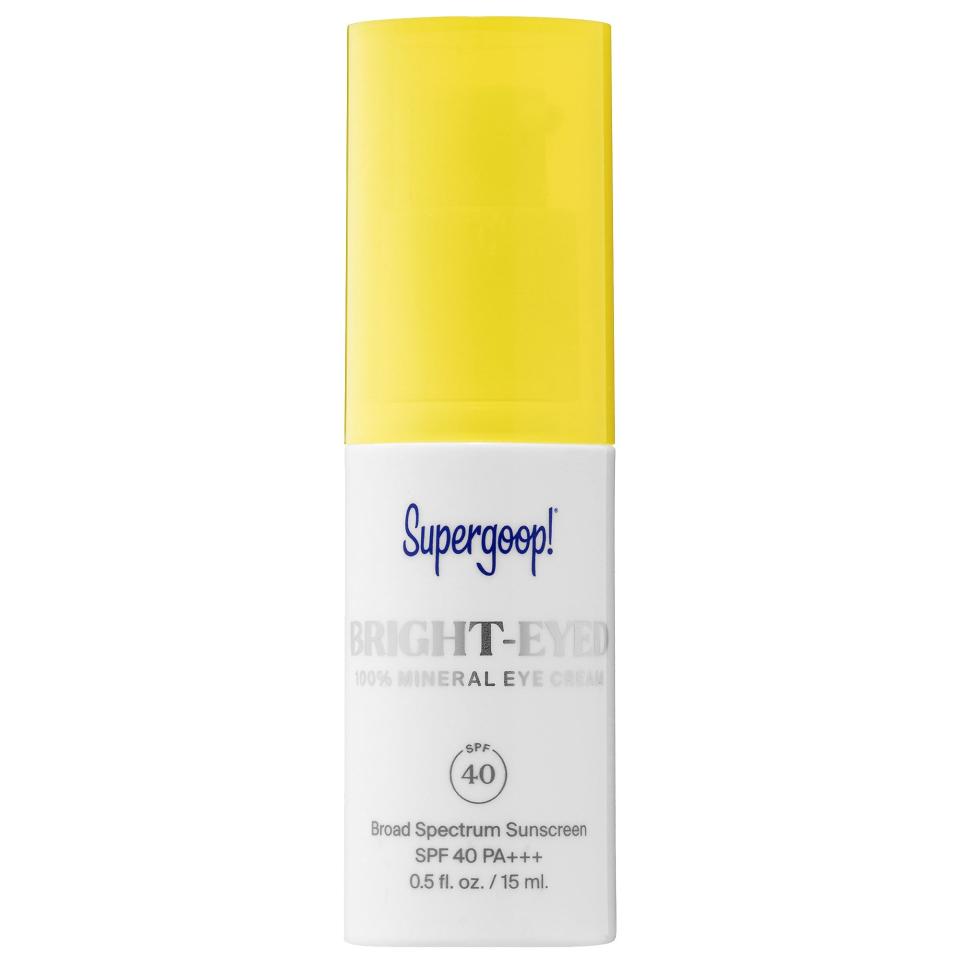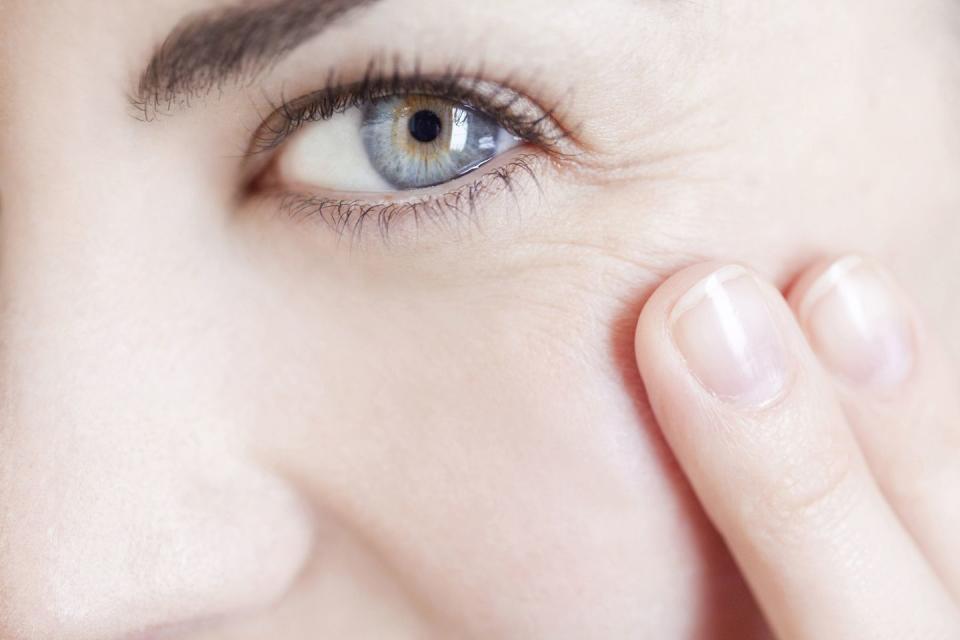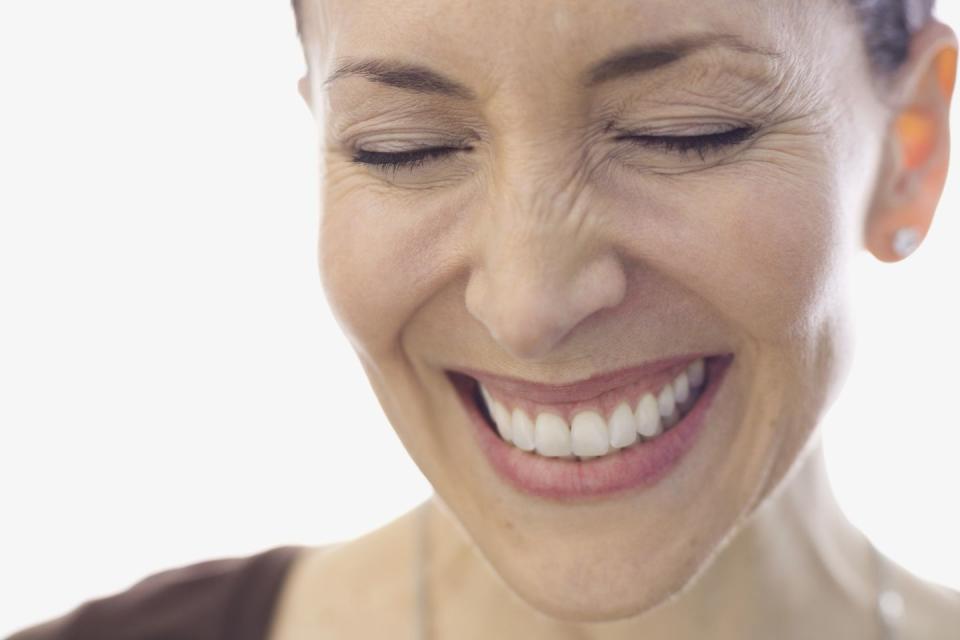How to Prevent and Treat Crow's Feet

"Hearst Magazines and Yahoo may earn commission or revenue on some items through these links."
Despite what societal beauty standards might tell us, aging is a beautiful process. However, we can acknowledge that fact while also feeling uncomfortable with the thought of sagging skin and wrinkles. Some of the most stubborn wrinkles to target are those small lines that develop right in the corner of our eyes. These tiny prolonged expression lines are known as crows feet, and they tend to form because the skin around our eyes is extremely delicate and thin.
Luckily, there are plenty of ways that we can erase, or at least minimize, even the most etched-in lines, from using non-invasive methods such as gentle retinols to more intense treatments like microneedling. Ahead, some of the top skin experts in the business share their tips on how to optimize the eyes.
What causes crow's feet?
When it comes to creating wrinkles, your eye area is sort of a perfect storm: thin skin that's more susceptible to environmental damage like UV rays and pollution, fewer oil glands which leave the skin drier and less supple, and lots of movement from facial contractions like smiling and squinting helps creases to form. Add in the natural loss of the subtle layer of skin-smoothing fat below your skin as you age, and you've got a recipe for lines.
At what age will you develop crow's feet?
It depends. "The age at which crow's feet appear is related to ethnicity, structure, genetics, repair mechanisms, skin thickness and cumulative sun exposure, lifestyle factors, diet, hydration and preventative measures," says cosmetic dermatologist Ava Shamban. "I've seen them as early as 19 or none at all at 35."
Can you prevent them without Botox?
Over the course of time, fine lines will inevitably emerge around the eyes from natural facial expressions (and hopefully a lot of smiling). But there are certainly ways to minimize and delay their formation. Shamban lists a number of preventative measures, including getting your eyes checked regularly (squinting, she says, is a "major ager"), wearing sunglasses habitually, treating allergies promptly to deflect inflammation and the impulse to rub the delicate skin around the eyes, sleeping on your back ("crushing your face into a pillow night after night accentuates both fine lines and deeper facial wrinkles"), and eating a skin-centric diet with plenty of antioxidants and as little sugar as possible.

Bright-Eyed 100% Mineral Eye Cream SPF 40
$36.00
sephora.com
The number one thing you need to be doing, though: Applying sunscreen. Every day. "Sun exposure is the number one cause of premature aging, and exposure to harmful UVA and UVB can cause premature wrinkle formation and thinning skin," warns dermatologist Howard Sobel. "Protect your eye area like you do your face, with SPF every day, and you’ll see fewer fine lines, wrinkles and dark circles over time."
The best at-home treatments

As with all wrinkles, regular moisturizing is key to minimizing lines, so make sure you're not leaving your delicate eye area out when you apply moisturizer to the rest of your face. A specialized serum can boost results of any hydrator, but Sobel suggests specifically looking for eye creams with peptides, ("they treat crow’s feet as they aid in collagen production and assist with essential cellular activities," he says) and humectants like hyaluronic acid which pull moisture in from the air and lock it into your cells.
Vitamins like vitamin A (from which retinol and retinoids are derived) and vitamin C (an antioxidant and brightening agent) can also help stimulate collagen around the eye area, giving skin more youthful firmness. However, since the eye area can be more sensitive than the rest of the face, approach a regimen of either of the vitamins slowly to avoid irritation.
Other skin-pro go-tos? "Cucumber is awesome for puffiness," says celebrity facialist Joanna Vargas. "Shea butter for hydration, and galactoarabinan (derived from the larch tree) gives you major cell turnover but is also an anti-inflammatory." But one of her favorite fixes actually comes courtesy of your pantry. "Oddly enough, the sweet potato as an ingredient is really amazing. It has vitamin A for cell renewal, vitamin B to tone and soothe the skin, vitamin C for collagen production, beta-carotene for healing and anthocyanin for puffiness." (Look for sweet potato in her Joanna Vargas Revitalizing Eye Cream.)
Professional treatments for crow's feet
Yes, a little Botox can make a big difference in crow's feet—both in slowing their development and smoothing them away. "Neuromodulators such as Botox, Dysport, and Xeomin inhibit the movement of the muscle which in turn will reduce the likelihood of a crease or crow’s feet from forming," says dermatologist and PFrankMD founder Paul Jarrod Frank.

Shamban believes that it is most effective to tackle crow's feet with with a layered method that includes injectables such as neuromodulators with very fine dermal fillers, lasers, and diligent at-home care. "I like the multi-modality approach," she says. "I often find a one-two punch will be most effective. It’s a bit of a conundrum as we want people to have some expression so I use less toxin and more filler to support the skin, more lasers and IPL to improve skin quality." She often uses an Aqua Gold dermapen to deliver smoothing micro-dose amounts of filler and toxin, and favors incorporating PRP or exosome injections to boost collagen synthesis and overall tightening. "For ongoing maintenance, Vivace or Morpheus microneedling radio frequency followed by a CO2LIFT [carboxytherapy treatment mask] will allow for instant healing and double down on the hydration."
If the idea of lasers or needles around your eye is a bridge too far, Vargas favors a less hands-on method. "My favorite in-salon treatment for those lines is LED Light Therapy. It's amazing and is the only thing that builds collagen without damaging the delicate surface of the skin," she says.
You Might Also Like

